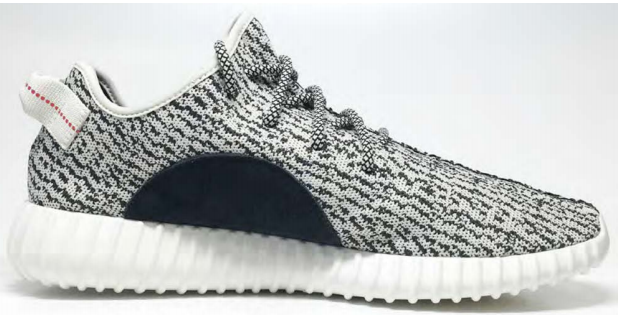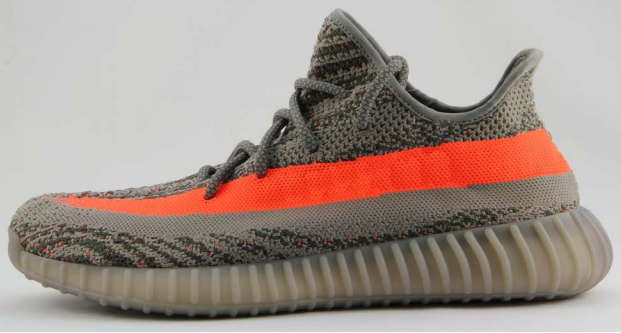By Julia Belagorudsky
After a two-year battle with the U.S. Copyright Office, adidas AG finally secured a favorable decision from the Review Board of the U.S. Copyright Office on May 8, 2019. The decision greenlighted some of the design elements of the Yeezy 350 Boost Version 1 and Version 2 for copyright protection. This decision further underscores that elements of footwear designs may be perceived as two-or three-dimensional works of art separate from the footwear itself. The distinction between the footwear design and works of art used on or as part of the footwear is a vital one because a “useful article,” such as footwear, is not eligible for copyright protection, while an artistic feature applied on or incorporated into a “useful article” may be eligible for such protection.
In 2017, the U.S. Supreme Court held in Star Athletica, LLC v. Varsity Brands, Inc., 580 U.S. ___ ; 137 S. Ct. 1002 (2017) that an artistic feature applied onto or incorporated into a useful article may be eligible for copyright protection if it: (1) can be perceived as a two- or three-dimensional work of art separate from the useful article, and (2) would qualify as a protectable pictorial, graphic, or sculptural work—either on its own or fixed in some other tangible medium of expression—if it were imagined separately from the useful article into which it is incorporated.”
Under the Copyright Act, a useful article is an “article having an intrinsic utilitarian function that is not merely to portray the appearance of the article or to convey information” and “[a]n article that is normally a part of a useful article is considered a ‘useful article.’” 17 U.S.C. § 101. Since footwear is considered a “useful article,” footwear designs are commonly protected by design patents rather than by copyright. adidas, for example, obtained design patents for its Yeezy Boost 350 sneakers. See U.S. design patent numbers D838,958 and D821,078. adidas applied for copyright protection of the “irregular black lines of various lengths and shapes on a gray fabric with a black semi-circle in the arch and an orange dotted stripe on an off-white heel loop” in the Yeezy 350 Boost Version 1 and “several grey lines in a wave pattern with a thick orange stripe on the outsole that fades toward the heel” in the Version 2 (the “Works”) in 2017.
 |  |
| Yeezy Boost 350 Version 1 | Yeezy Boost 350 Version 2 |
Registration had initially been denied because the Office’s Registration Policy and Practice division concluded that the applied-for Works were useful articles that did not contain the copyrightable authorship needed to sustain a claim of copyright. Following this refusal, adidas filed its first request for reconsideration, and the Office again refused registration. This time, the Office noted that while the Works contained separable designs, the designs did not meet the originality requirement as they consisted of “simple shapes arranged into common, expected patterns in very simple color schemes.” Not easily dissuaded, adidas filed a second request for reconsideration, which successfully argued for the copyrightability of the Works.
In reversing the refusal to register the copyright claim in the Works, the Review Board found that the Works contained a sufficient amount of original and creative two- and three- dimensional authorship for registration. In reaching its decision, the Board relied heavily on the low standard for copyrightability articulated in Feist Publications v. Rural Telephone Services, Co., 499 U.S. 340 (1991). In Feist Publications, the U.S. Supreme Court stated that “the standard for creativity is “extremely low” and “[the work] need not be novel, rather it only needs to possess a ‘spark’ or ‘minimal degree’ of creativity to be protected by copyright.” 499 U.S. at 345.
The Yeezy decision may help pave the way for footwear designers to add copyright protection to their intellectual property portfolios, alongside more traditional forms of protection such as trademark protection for the brand names and trade dress and design patent protection for the footwear design.

















































